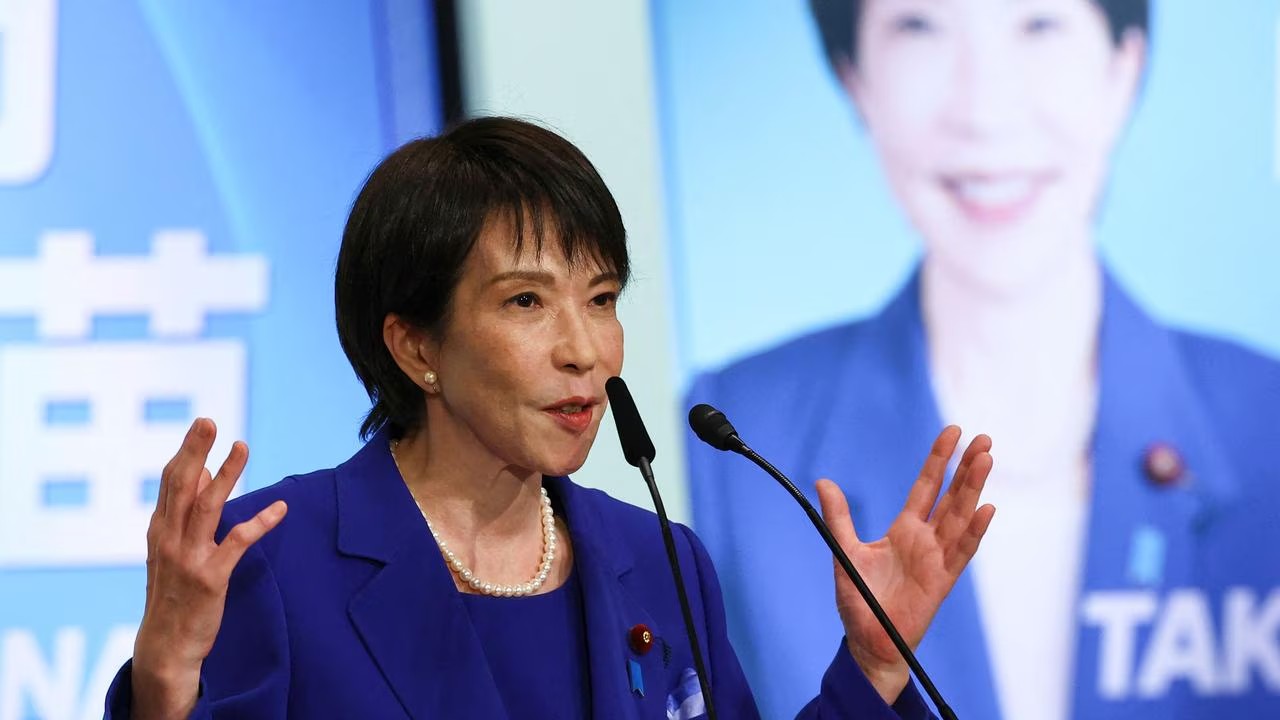TOKYO: China hawk Sanae Takaichi secured leadership of Japan’s ruling Liberal Democratic Party (LDP) on Saturday, positioning her to become the nation’s first female prime minister.
The 64-year-old politician, who has openly admired former UK leader Margaret Thatcher, now faces the challenge of reviving the struggling LDP while countering the rise of a new anti-immigration faction gaining ground with Japanese voters.
If confirmed by parliament — a move expected as early as the week of October 13 — Takaichi will become Japan’s fifth prime minister in just five years.
Leadership Race Against Koizumi
On Saturday, Takaichi won the LDP presidency after defeating Shinjiro Koizumi, the charismatic 44-year-old son of a former prime minister, in a tense runoff. Koizumi would have been the youngest Japanese PM in modern history, symbolizing a generational shift for the ruling party.
Their runoff followed the elimination of moderate candidate Yoshimasa Hayashi — nicknamed “Mr. 119” after Japan’s emergency number — and two other contenders.
Takaichi inherits daunting challenges: Japan’s rapidly aging population, an economy struggling to recover, global geopolitical tensions, and the divisive debate over immigration.
Immigration at the Heart of Politics
The campaign reflected growing voter unease over immigration. A rising populist party, Sanseito, has labeled foreign arrivals a “silent invasion,” echoing anti-immigration movements worldwide.
Both Takaichi and Koizumi addressed the issue in their campaigns. Takaichi argued Japan must “reassess policies that permit the entry of individuals from vastly different cultures and backgrounds,” while Koizumi highlighted concerns over “unauthorized hiring of foreign workers and increasing public safety issues.”
Though only three percent of Japan’s population is foreign-born, public anxiety is rising.
“Societal tolerance toward foreigners is declining,” said pensioner Kimiko Tamura, 66, in Kawaguchi, one of Japan’s most diverse cities. In contrast, Nguyen Thu Huong, a 33-year-old Vietnamese resident who moved to Japan 14 years ago, remarked: “Cultural differences are hard to grasp… but Japan is a wonderful place to reside.”
Economic Vision and Abenomics 2.0
On economic policy, Takaichi has long backed aggressive monetary easing and heavy fiscal spending in line with her mentor, the late Shinzo Abe, who pioneered “Abenomics.”
However, during her campaign, she presented a slightly more moderate stance. Known as a frequent visitor to the controversial Yasukuni Shrine, Takaichi has also softened her rhetoric on China compared to earlier years.
Despite global headlines celebrating the prospect of Japan’s first female PM, some analysts caution against premature optimism.
Gender and Political Challenges
“Takaichi lacks interest in women’s rights or gender equality initiatives,” said Yuki Tsuji, a politics and gender expert at Tokai University.
Meanwhile, experts noted Koizumi’s potential weaknesses: while admired for his modern approach — he famously took paternity leave and surfs — he struggles in debates. “I question the duration of his popularity once parliament commences,” remarked Sadafumi Kawato, professor emeritus at the University of Tokyo.
With her victory, Takaichi now stands at a historic crossroads for Japan: the first woman to hold the nation’s top office, but also a leader whose deeply conservative views could divide voters at home and abroad.





